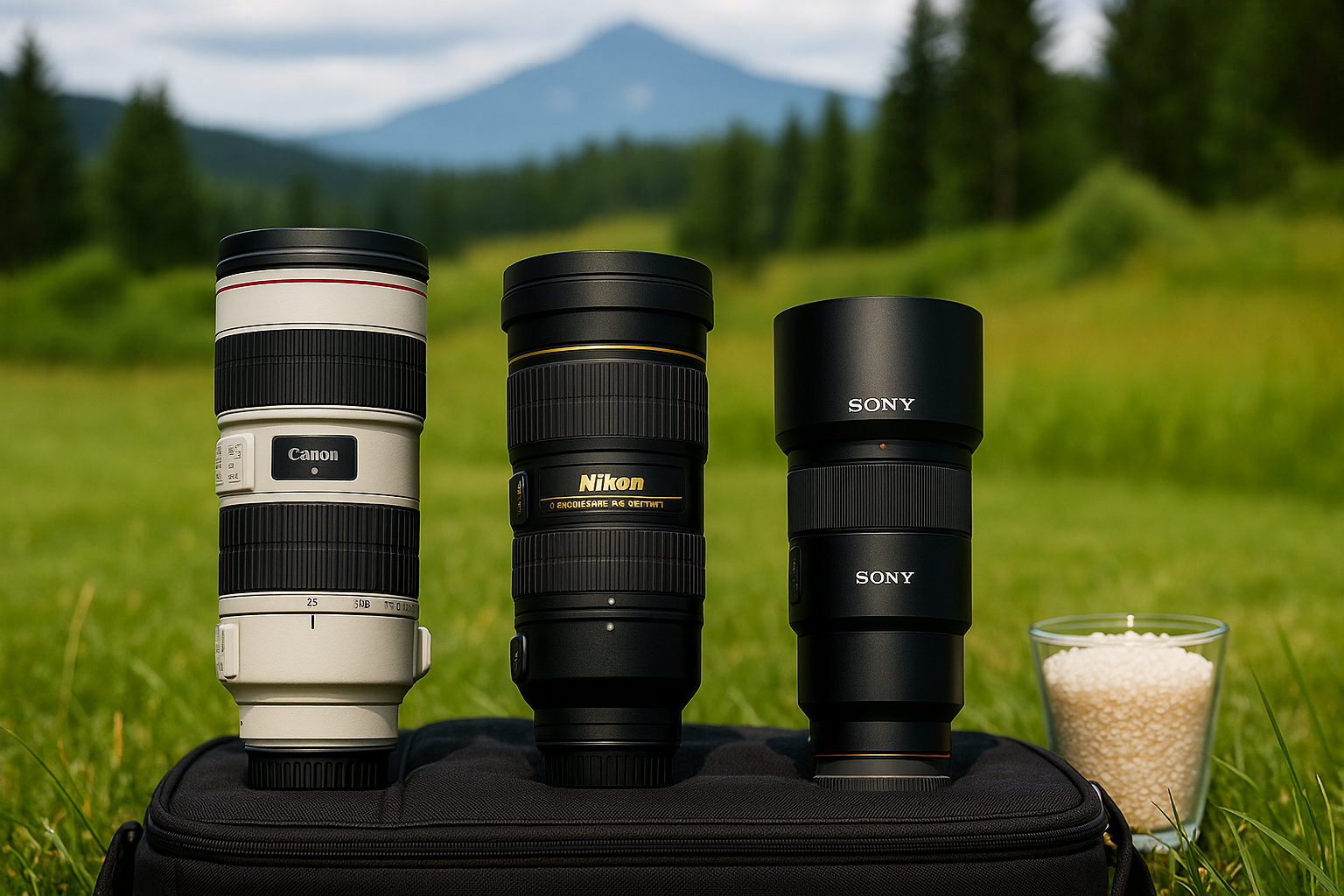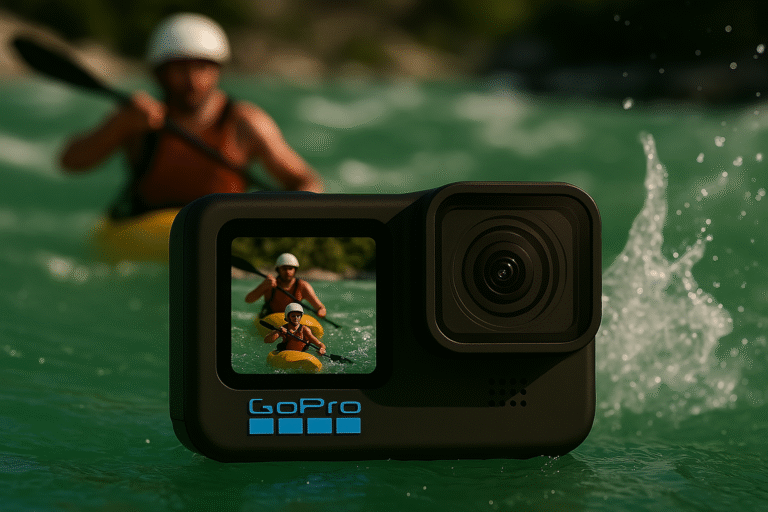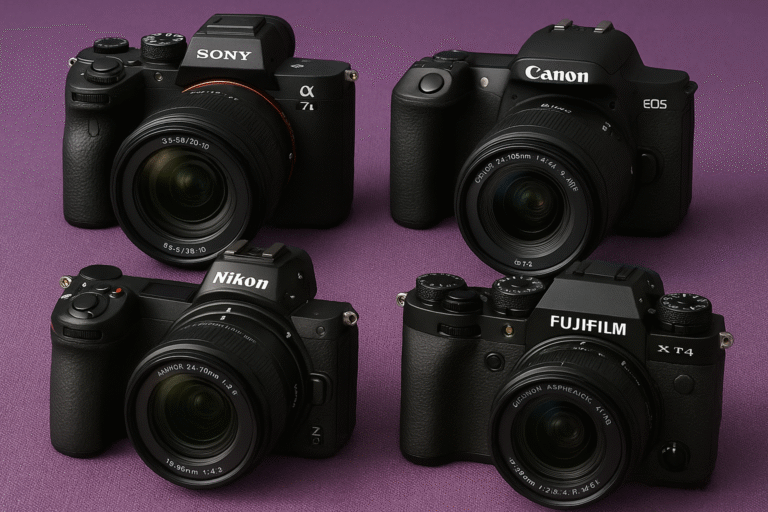Is It Worth Investing in Used Japanese and German Telephoto Lenses in 2025?
In the world of modern photography, few tools have the power to turn an ordinary image into an unforgettable shot like a quality telephoto lens. Whether you’re a wildlife photographer, a sports shooter, or someone who simply wants to capture what can’t be reached, having the right lens changes what you see—and what you can show.
But in 2025, prices for brand-new telephoto lenses have reached uncomfortable levels. Models beyond 300mm can easily cost between $1,500 and $3,000. Is there a smarter path without compromising on quality?
Yes—if you know where to look and what to look for. The answer lies in Japan, Germany, and in understanding how to buy smart in the second-hand market.
This article is not just a product roundup. It’s an educational guide for those who want to invest wisely, with clear explanations, practical comparisons, and a professional lens that also speaks to amateurs and hobbyists.
You’ll discover:
- What a telephoto lens really is, and how it works
- Why action cameras are not compatible with real telephoto gear
- Which Japanese and German lenses are worth your attention in 2025
- What to check before buying second-hand gear
- How to buy safely from Japan—even if you live in Latin America or Europe
This post is made to teach, not to sell.
If you’re about to take your next step in photography, this is a solid place to begin.
🔍 What Is a Telephoto Lens?
A telephoto lens is designed to bring faraway subjects close and compress perspective. Unlike standard lenses (like 35mm or 50mm), a telephoto allows you to fill the frame with something physically distant. Focal lengths usually begin at 70mm and go beyond 600mm, depending on your purpose.
Key advantages:
- Perspective compression: Objects in the background appear closer to those in the foreground.
- Background blur (bokeh): Excellent for wildlife and portraits.
- Wide aperture options: f/2.8 lenses perform better in low light and provide better blur.
- Optical stabilization (IS/VR/OSS): Helps when shooting handheld.
- Advanced autofocus motors: USM, STM, VXD, or XD Linear are fast and silent.
🧭 Types of Telephoto Lenses by Focal Length
🔭 Telephoto Lens Types by Use Case
| Category | Focal Length | Best For |
|---|---|---|
| Short Telephoto | 70–135mm | Portraits, events, close wildlife |
| Mid-Range Telephoto | 150–300mm | Sports, nature, semi-distant subjects |
| Super Telephoto | 400mm+ | Birds, concerts, moon, long-range action |
🚫 Can You Use a Telephoto Lens with an Action Camera?
Short answer: no. Action cameras (like GoPro, DJI, Insta360) are not compatible with traditional telephoto lenses. These cameras come with ultra-wide-angle lenses that are fixed (non-removable), and they rely on digital zoom, which crops and lowers image quality.
Why action cameras don’t work for telephoto:
- No lens mount to attach external lenses
- Only digital zoom available = lower clarity
- Even macro or ND filter accessories won’t give real reach
📌 If your goal is to capture faraway subjects with professional quality, an action cam is the wrong tool.
📷 What Kind of Camera Do You Need for a Telephoto Lens?
📷 Types of Cameras That Support Telephoto Lenses
You need a camera that allows you to change lenses. There are two main types:
1. Interchangeable Lens Cameras
- DSLR: Large cameras with internal mirrors. Mounts: Canon EF, Nikon F.
- Mirrorless: Compact, no mirror, fast autofocus. Mounts: Canon RF, Nikon Z, Sony E, Fujifilm X.
2. Bridge Cameras (Superzoom Compacts)
These have built-in powerful zoom lenses but don’t support external lens attachments. Good for travel and beginners, but less capable in low light.
Summary:
| Camera Type | Lens Swap? | Telephoto Support | Built-in Zoom | Image Quality |
|---|---|---|---|---|
| DSLR | ✅ | ✅ | ❌ | ⭐⭐⭐⭐ |
| Mirrorless | ✅ | ✅ | ❌ | ⭐⭐⭐⭐⭐ |
| Bridge | ❌ | ❌ (has zoom) | ✅ | ⭐⭐⭐ |
🇯🇵🇩🇪 Top Telephoto Lenses from Japan and Germany (2025)
📌 Top Japanese Brands:
- Canon RF 100–500mm f/4.5–7.1L IS USM
- Nikon Z 180–600mm f/5.6–6.3 VR
- Sony FE 200–600mm f/5.6–6.3 G OSS
- Fujifilm XF 150–600mm f/5.6–8 R LM OIS WR
- Tamron 150–500mm f/5–6.7 Di III VC VXD
Why Japan? Precision engineering, advanced coatings, and high resale value even after years of use.
📌 Top German Lenses:
- Leica APO-Telyt-R 280mm f/2.8
- Carl Zeiss Sonnar T* 135mm f/1.8 ZA
- Voigtländer 180mm APO-Lanthar
Why Germany? Optical purity, metal construction, and exceptional lifetime durability.
♻️ Why Buy Used from Japan or Germany?
♻️ Advantages of Buying Second-Hand from Japan or Germany
- Transparency: Listings are clearly rated (e.g., Excellent+++, Near Mint).
- Clean conditions: Lenses are often stored well in dry environments.
- High resale value: Japanese-made lenses retain performance and demand.
- Return policies: Many sellers offer buyer protection or return options.
📌 Tip: Some used lenses in Japan are “like new” but cost 30% to 60% less than their original price.
🌍 Tips for International Buyers
📦 Tips for International Buyers
- Amazon Japan is one of the most reliable sources for both new and used telephoto lenses.
- Use search filters like
中古(used) or美品(excellent condition) to find high-quality listings. - Some sellers ship internationally. For others, use a forwarding service like Buyee, Tenso, or ZenMarket.
- Activate a VPN to access regional pricing and exclusive offers on Amazon Japan.
- Read seller condition ratings carefully—Japanese sellers are known for transparency.
🛠️ What to Check Before Buying a Used Telephoto Lens
🛠️ What to Check Before Buying
- Lens mount compatibility: Make sure the lens fits your camera (e.g., Canon EF/RF, Nikon Z, Sony E).
- Optical condition: Look for fungus, internal dust, or scratches.
- Autofocus motor: It should be responsive and quiet. Avoid “sticky” or noisy focus.
- Image stabilization: Crucial if you plan to shoot handheld.
- Country of origin: “Made in Japan” or “Made in Germany” lenses are more reliable and better built.
📌 Tip: Look for listings with clear pictures, seller ratings, and return policies—especially on Amazon Japan.
Explore Amazon listings by region
As an Amazon Associate, I earn from qualifying purchases. Your support helps keep this site running.
🧾 Final Thoughts
🧾 Final Thoughts
Investing in a good telephoto lens doesn’t just improve your photos—it expands what’s possible. And in 2025, Japan and Germany offer some of the most attractive opportunities in the used gear market worldwide.
This isn’t about chasing “cheap” deals. It’s about buying smart—with knowledge, strategy, and a clear understanding of your photographic goals.
The best lenses in the world are still being made—and well preserved—in Japan and Germany. Now you just need to know where to look.


